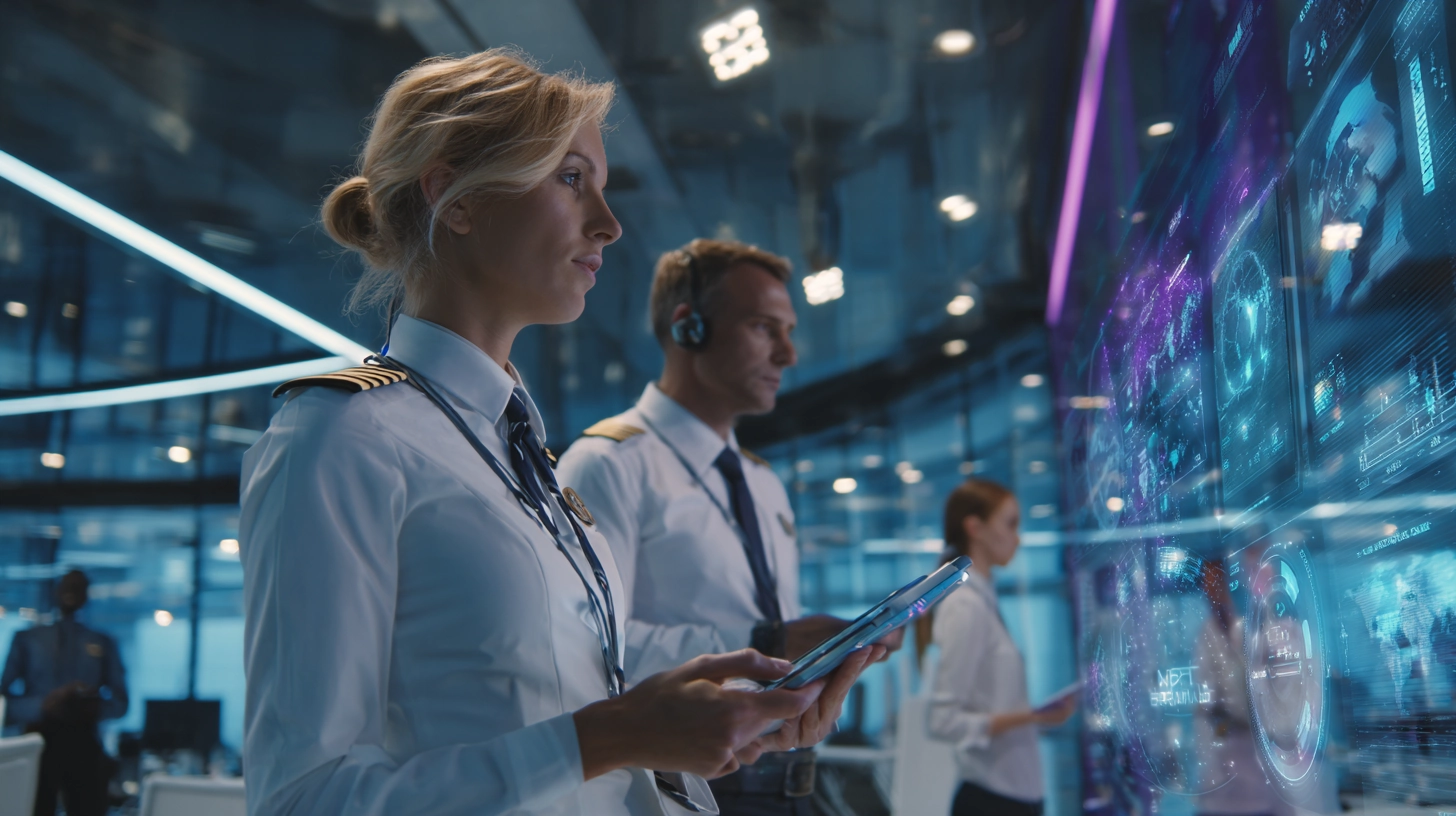It started with a single CV flagged as “not a fit.” The recruiter, juggling two open roles and a day’s worth of interviews, barely glanced at the applicant’s portfolio before the algorithm pushed them aside. Three months later, a competitor hired the same candidate, who’d taught avionics at a regional flight school and logged multi-engine time, using a different AI tool that weighed skills and simulator hours more heavily. The lesson landed hard. While algorithms speed up hiring, they also steer it. In aviation, where safety, regulatory compliance, and specialist skills collide, those steering decisions matter.
“AI can make us faster, but it must never make us less human. Our role is to use technology to uncover talent, not hide it.” Says Mindaugas Rainys CEO of Aerviva.
How AI Is Changing Aviation Recruitment
AI is reshaping aviation hiring workflows across sourcing, screening, interviewing, and onboarding. Tools that collect information from public profiles and analyze thousands of CVs can find qualified candidates quicker than any human team; chatbots manage scheduling and answer basic questions about licences and medical requirements; and assessment platforms can test technical skills, thinking abilities, and decision-making in various situations on a large scale. These changes are particularly impactful in aviation, where demand for trained professionals (pilots, technicians, cabin crew, and engineers) remains strong while supply chains, retirements, and regulatory training cycles create hiring bottlenecks. Airbus Global Services Forecast 2025/2044 shows sustained long-term demand for aviation professionals. It is estimated that 705,000 new technicians, 633,000 new pilots and 1,010,000 new cabin crew will be needed over the next 20 years. Other reports show that as many as 1,465,000 new civil aviation professionals will be needed by 2034, fueling the push to use AI for faster, more efficient recruitment.
AI’s appeal in aviation recruitment is pragmatic: faster time-to-hire, better matching of niche technical skills, and improved candidate experience when routine tasks (like scheduling or paperwork) are automated. However, the technology also changes who gets seen. A sourcing model prioritizing online certifications over hands-on simulator hours, for instance, will tilt candidate pools in subtle ways. Aviation recruiters now split their attention between candidate pipelines and the logic behind the models that curate them.
Opportunities and Ethical Challenges
Opportunities
AI offers aviation recruiters several practical advantages. It can scale specialized searches by identifying passive candidates with rare licenses, type ratings, or avionics expertise through scanning industry forums, training records, and public registries. This is particularly valuable for roles requiring highly specific experience. At the same time, AI enables faster screening without compromising quality, using automated skills assessments and structured interview scoring to reduce variability between human evaluators while ensuring critical requirements, such as mandatory medical certificates, are consistently checked. Additionally, predictive analytics support better workforce planning, allowing HR teams to anticipate training needs and aviation hiring waves linked to fleet expansions or retirement, which helps in effectively scheduling cadet programs and apprenticeship intakes.
Ethical challenges
AI-driven recruitment in aviation introduces several ethical challenges that must be carefully managed. Algorithmic bias and fairness are major concerns, as models trained on historical hiring data can unintentionally replicate past exclusions, potentially undermining diversity or disadvantaging candidates from non-traditional pathways. This poses both legal and reputational risks, particularly as regulators tighten oversight of AI in hiring, making it essential for employers to evaluate models for disparate impact and document mitigation strategies. Fraud and authenticity are also pressing issues; candidates may use AI to create highly polished CVs and cover letters or even falsify qualifications, complicating verification. Reports indicate a rising incidence of identity and credential fraud; 77% of U.S. national infrastructure orgs (including aviation and transport) saw insider cyber threats over the past three years, prompting employers to implement layered background checks and robust identity verification processes, which are critical in safety-sensitive aviation roles. Finally, transparency and explainability are essential: aviation organizations must clearly justify hiring decisions to candidates and regulators alike. ‘Black box’ systems that cannot explain why a certified technician was filtered out are unacceptable in industries where safety and accountability are paramount.
Practical mitigations include combining automated screening with human review at key decision points, testing models for bias before deployment, keeping audit logs of model decisions, and embedding multi-factor verification (training records, simulator logs, licence registries) into the aviation hiring workflow.

The EU’s AI Act And What It Means for Aviation Hiring
As artificial intelligence becomes increasingly embedded in recruitment and workforce management, Europe’s new AI Act will play a decisive role in shaping how aviation companies attract, assess, and retain talent. This act is the world’s first comprehensive framework governing AI and it’s goal is to ensure that technology is safe, transparent, and non-discriminatory, while still supporting innovation across sectors.
At the heart of the legislation is a risk-based approach, classifying AI systems according to their potential impact. Applications that pose an unacceptable risk will be banned outright. However, the category most relevant to aviation is high-risk AI, which includes systems used in safety-critical industries and employment decisions.
For airlines, airports, and aviation service providers, this means that AI-driven recruitment tools, automated candidate screening, and even crew scheduling systems may fall under stricter regulatory oversight. Companies will be required to ensure that these systems are transparent, traceable, and fair with robust safeguards to prevent bias or discrimination. Applicants must be informed when AI is used in the decision-making process, and there must be avenues for human review and appeal.
The implications go beyond compliance. The aviation industry, already accustomed to stringent safety standards, will now need to adopt similar rigor in the management of AI-powered HR systems. This includes detailed documentation, ongoing risk assessments, and independent audits where appropriate.
While the Act introduces new obligations, it also offers opportunities. The EU is establishing AI sandboxes, which is the name given to controlled environments that allow startups and established companies to test and refine AI tools under regulatory supervision. For aviation organizations eager to integrate data-driven hiring while maintaining trust and accountability, these sandboxes could prove invaluable.
Ultimately, the EU AI Act aims to build confidence in automation by setting clear rules that protect people while encouraging innovation.
Future Trends in AI-Powered Hiring
- Hybrid human-AI orchestration: Expect orchestration platforms that make AI recommendations but enforce human sign-off for final safety-critical hires. This will be paramount, especially for the roles of pilots and maintenance technicians. This balances efficiency with accountability.
- Skill-centric hiring over credential-centric hiring: AI models will increasingly match micro-skills for example, specific avionics systems, type-rating simulator hours, or retrofit experience, rather than relying solely on job titles. That will widen candidate pools and spot transferrable talent from adjacent industries, such as defense, maritime electronics, or other areas.
- Stronger verification tech: Biometric validation, secure digital credentialing (blockchain-style transcripts or verified simulator logs), and AI-driven fraud detection will become standard to counter falsified qualifications. The arms race between candidate-side AI polish and employer-side verification will accelerate.
- Regulatory-first AI adoption: As jurisdictions publish rules and guidance on algorithmic fairness and explainability, aviation employers that adopt “compliance-by-design” will avoid legal headaches and attract talent sensitive to fairness and transparency. Expect audits, model documentation, and pre-deployment fairness tests to be commonplace.
- Operational impacts and workforce shifts: While some administrative roles may shrink as airlines automate scheduling and rostering, demand will rise for training designers, simulation engineers, data scientists, and human-in-the-loop safety officers who ensure AI systems align with operational needs. Cases of airlines announcing AI-driven workforce changes underline the need to reskill and redeploy personnel thoughtfully. For Example, Lufthansa Group has said that it would shed 4,000 jobs by 2030 with the help of AI, most of these roles affected are administrative rather than operational.
Looking Forward
AI is neither magic nor menace; it’s a tool that will amplify how recruitment decisions are made. For aviation, the stakes are higher than in many industries: safety, regulatory compliance, and specialized skills mean recruiters must be both tech-fluent and risk-aware. The most successful aviation employers will be those that pair AI’s speed and matching power with rigorous verification, anti-bias safeguards, human oversight, and a commitment to transparency. Doing so not only protects passengers and operations but also strengthens employer reputation in a sector where trust is everything.

